Stereoscopic fisheye projection into an upright dome(Principles also apply to other orientated domes)
Written by Paul Bourke Introduction The following is a report on an initial attempt at turning an upright hemispherical dome into a stereoscopic projection dome. The technology that makes this possible is mainly the release of the Christie Mirage HD3 projector that is a DLP projector capable of frame sequential stereo at 120Hz and is also HD resolution, namely 1920x1080. Furthermore it only requires a 60Hz frame sequential signal from the computer, the projector internally multiplexes that up to 120Hz. So for example while the computer outputs a left and right image at 1/60 of a second, this gets up-scaled to two left/right pairs every 1/60 second. The sync pulse from the graphics card is similarly fed into the projector which then drives the emitter for the glasses at the required frequency.
Christie Mirage HD3 behind the dome. Unfortunately the lens available was not ideal for this exercise since it wouldn't focus on a small enough image for the spherical mirror. The solution was to separate the mirror and projector more than one would like, while this was adequate for the testing it didn't allow the full resolution of the HD projector to be tested. 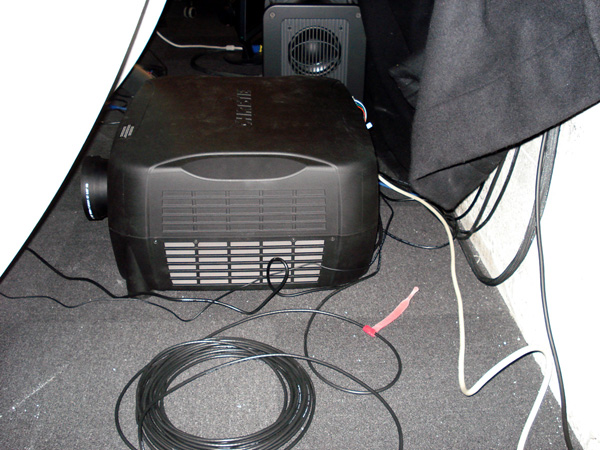
Emitter and cables remote. The emitter port from the computer (in this case Mac OS-X with nVidia FX4500 graphics card) is fed into the emitter port on the projector which in turn creates it's own signal for the actual emitter. Obviously necessary since the computers emitter is only running at 60Hz while the Christie is multiplexing that up to 120Hz. For this exercise the NuVision 60GX glasses and emitter were used. 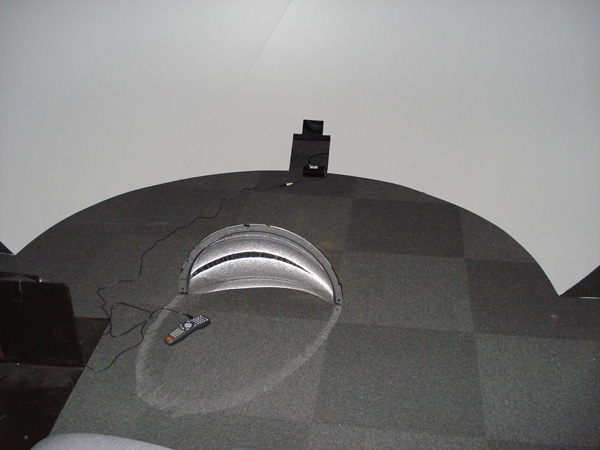
Mac OS-X windows on the dome. The tests were performed using Mac OS-X, this gives very clean configuration of output resolution as well as good stereo support through the Apple Opengl API and GLUT libraries. 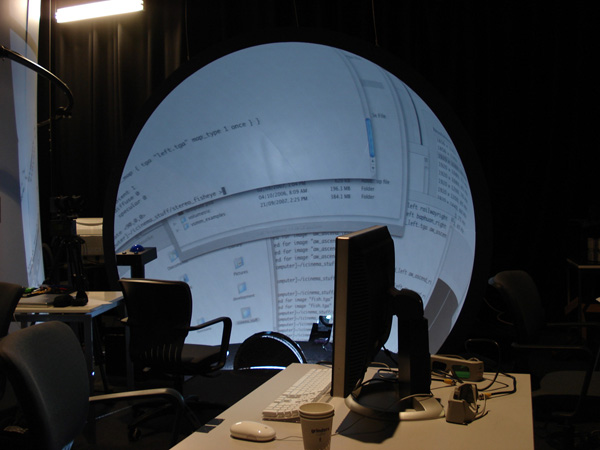
Alignment pattern. The projection using a spherical mirror instead of a fisheye lens requires that a warping mesh be created such that all subsequent fisheye content is correctly distorted in order for the result on the dome surface to appear correct and undistorted. 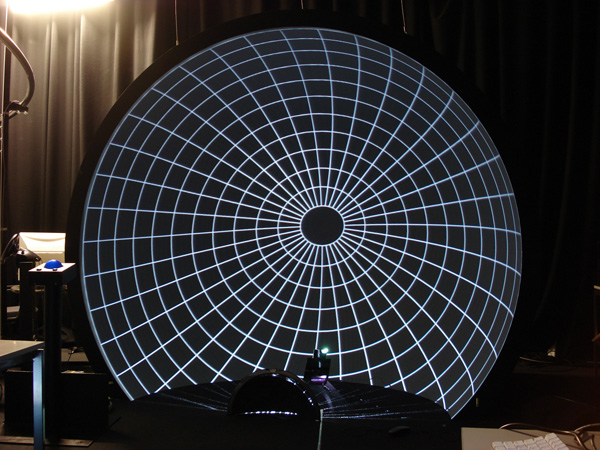
Example test scene. Various schemes for creating stereoscopic fisheye pairs were tested using a synthetic scene which contained objects at precisely well defined/known depths. For example the polar grid is at 0 parallax, at the same depth as the dome itself. The red cube outlines are exactly half in front and half behind the dome surface, and their actual depth is known and can thus be compared to the perceived depth. 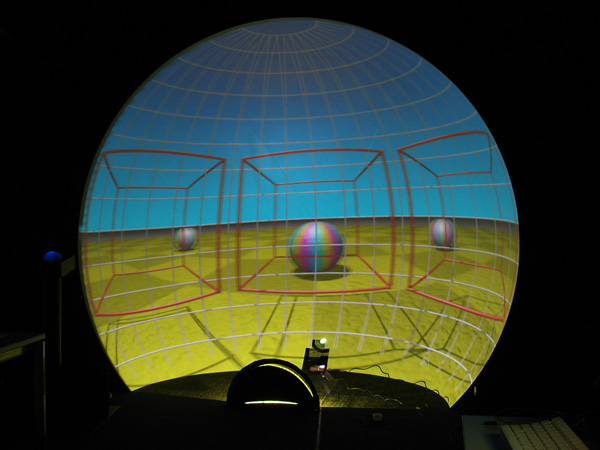
Photographic examples (Courtesy Peter Murphy). Unfortunately, even more so than normal stereoscopic content, photographs don't do justice to the result. Not only does one need to be wearing the shutter glasses (hence the blurred double images shown here) but one needs to have ones head in the correct position, in this case at the center of the hemisphere. There is also the difficulty of taking photos in such dark conditions. 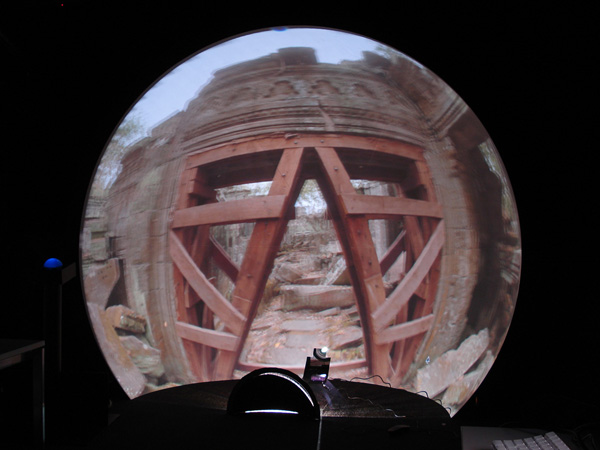
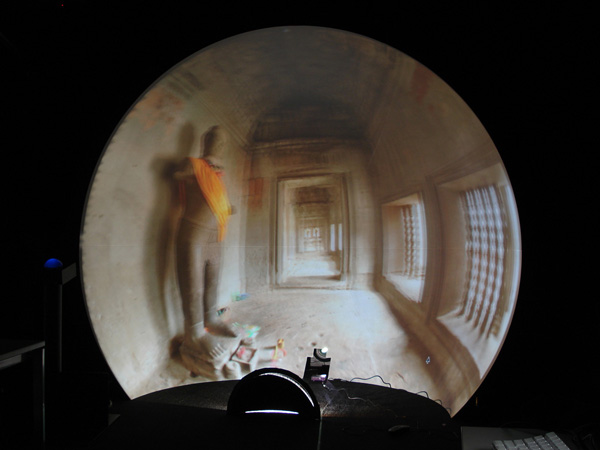
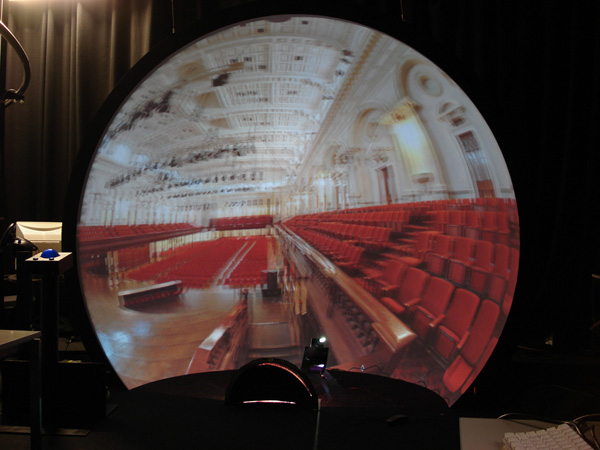
|